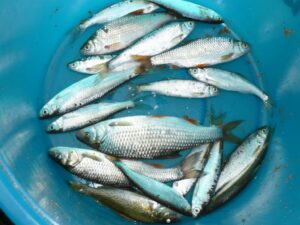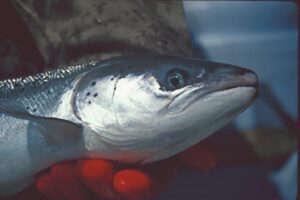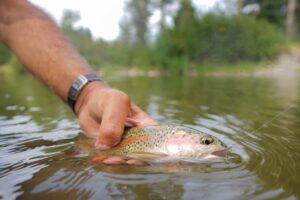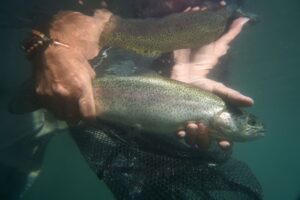The Basics of Fly Fishing: A Comprehensive Guide
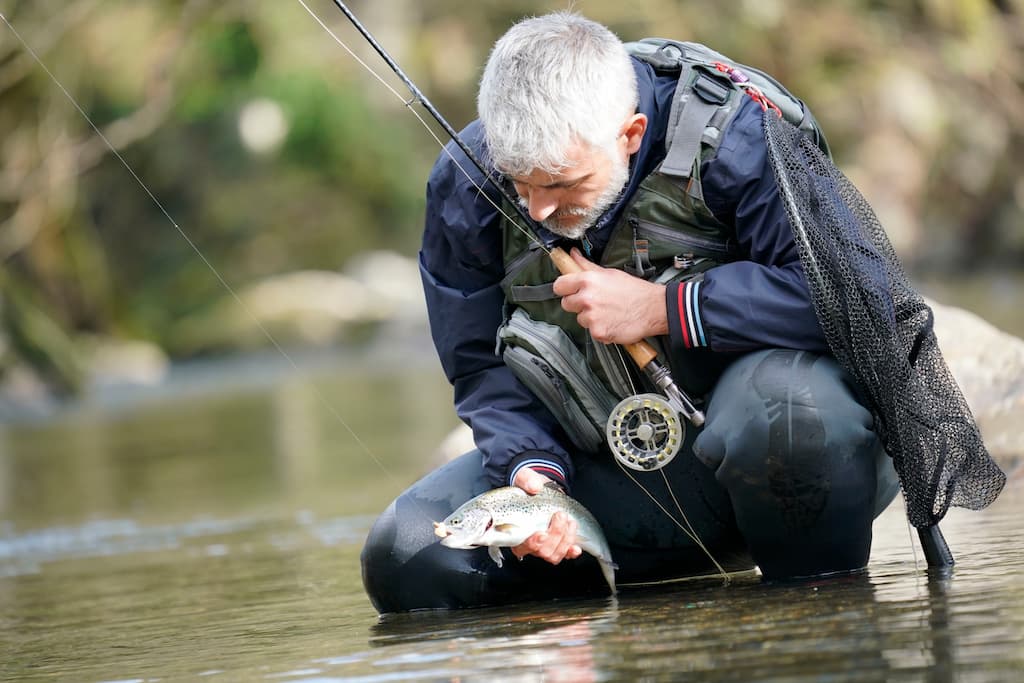
Fly fishing is a captivating technique that involves using a lightweight artificial fly to lure fish.
It is a practice that requires finesse, precision, and a deep connection with nature. In this comprehensive guide, we will explore the fundamentals of fly fishing, including the necessary equipment, casting techniques, effective strategies, target fish species, prime fishing locations, tips for beginners, ethical considerations, and the numerous benefits of engaging in this relaxing and rewarding activity.
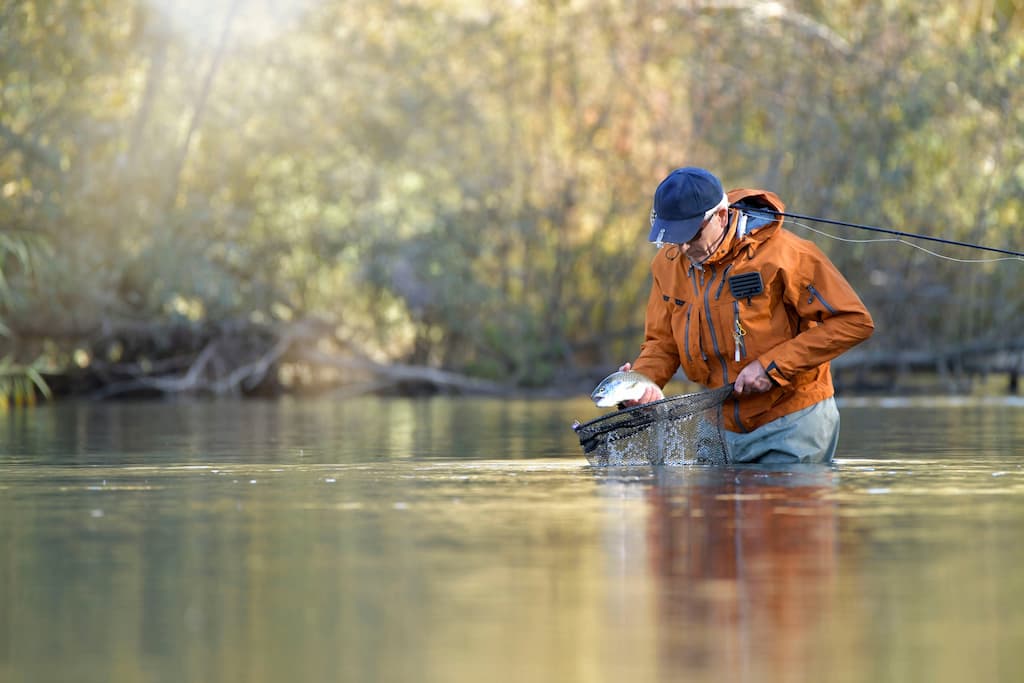
Equipment Essentials
To embark on your fly fishing journey, it is essential to have the right equipment. Here are the key elements you’ll need:
- Fly Rod: A specially designed lightweight and flexible rod specifically made for fly fishing.
- Reel: A reel suitable for fly fishing, used to store and release the fly line.
- Fly Line: A specialized line designed to facilitate fly casting.
- Leader and Tippet: A thin, transparent section of line that connects the fly line to the fly.
- Flies: Artificial imitations of insects or other prey used to attract fish. They come in various types, including dry flies, wet flies, and nymphs.
Casting Techniques
Mastering the art of casting is crucial for successful fly fishing. Here are some common casting techniques to learn:
- Forward Cast: This involves casting the fly forward by using the weight of the line to generate speed and distance.
- Back Cast: This technique involves casting the line backward before projecting it forward.
- Double Haul: An advanced technique that allows you to control the drift of the fly by simultaneously pulling the line with both the casting and retrieving hand.
- Roll Cast: A cast that utilizes the tension of the line on the water’s surface to generate the necessary force to propel the fly.
Effective Fishing Strategies
To increase your chances of catching fish while fly fishing, it’s important to implement effective strategies. Consider the following elements:
- Environmental Observation: Carefully observe the water, insects, and fish behavior to determine the appropriate fly and presentation.
- Fly Selection: Choose the fly that closely matches the insects present in the water and the feeding preferences of the fish.
- Fly Presentation: Pay attention to how you present the fly, aiming for a natural drift that mimics the behavior of the real insects.
Different Fly Fishing Techniques
Fly fishing offers a variety of techniques to target fish in different scenarios. Here are some popular techniques:
- Nymph Fishing: Using artificial nymphs that imitate the underwater larval stages of insects.
- Dry Fly Fishing: Utilizing floating flies that imitate adult insects resting on the water’s surface.
- Wet Fly Fishing: Drifting submerged flies at different depths to entice fish.
- Streamer Fishing: Employing larger, streamer-type flies that imitate baitfish or other prey.
Targeted Fish Species
Fly fishing allows you to target a wide range of fish species. Here are some popular ones:
- Trout: Trout are the quintessential target of fly fishing, whether in rivers or lakes.
- Salmon: Atlantic salmon is highly sought after by fly anglers, especially during their upstream migration.
- Grayling: This cold-water fish, also known as the lady of the stream, offers exciting fly fishing opportunities.
- Bass: Bass can be effectively targeted with fly fishing techniques, providing an exhilarating fight.
- Other Species: Fly fishing can also be employed to target various species, including pike, carp, and panfish.
Prime Fly Fishing Locations
Fly fishing can be enjoyed in diverse water bodies. Here are some of the best locations:
- Rivers: Rivers offer a varied habitat for fish and provide excellent opportunities for fly fishing.
- Lakes: Fly fishing in lakes can be done from the shore or by using float tubes or boats to access prime fishing spots.
- Ponds: Ponds are often populated with fish, making them suitable for fly fishing enthusiasts.
- Coastal Areas: Certain coastal areas offer opportunities for fly fishing, targeting species such as sea trout and striped bass.
Tips for Beginners
If you’re new to fly fishing, here are some valuable tips to help you get started:
- Take Lessons: Consider taking lessons or seeking guidance from experienced instructors to learn the basics and improve your skills.
- Practice Casting: Regular practice is essential to develop your casting technique and achieve accuracy and distance.
- Observe Experts: Watch instructional videos, join fly fishing clubs, or go on guided trips with experienced anglers to learn from their expertise.
- Be Patient: Fly fishing requires patience and perseverance. Embrace the learning process and enjoy the journey.
Ethical Considerations
Responsible angling is essential in fly fishing. Adhere to these ethical principles:
- Respect Fishing Regulations: Familiarize yourself with local fishing regulations, including catch limits and size restrictions, and ensure compliance to protect fish populations.
- Practice Catch and Release: Promote the conservation of fish populations by practicing catch and release whenever possible.
- Respect the Environment: Leave fishing spots clean, dispose of waste properly, and respect the natural surroundings.
The Benefits of Fly Fishing
Engaging in fly fishing offers numerous advantages, both physical and mental. Here are some key benefits:
- Relaxing Activity: Fly fishing allows you to disconnect from the daily hustle and bustle and immerse yourself in nature, providing a calming and therapeutic experience.
- Connection with Nature: Fly fishing provides an opportunity to explore beautiful natural environments, observe wildlife, and appreciate the serenity of the outdoors.
- Personal Challenge: Mastering the art of fly fishing requires dedication and skill development, offering a sense of personal accomplishment and growth.
- Community: Joining the fly fishing community provides opportunities to connect with fellow anglers, share experiences, and learn from one another.


